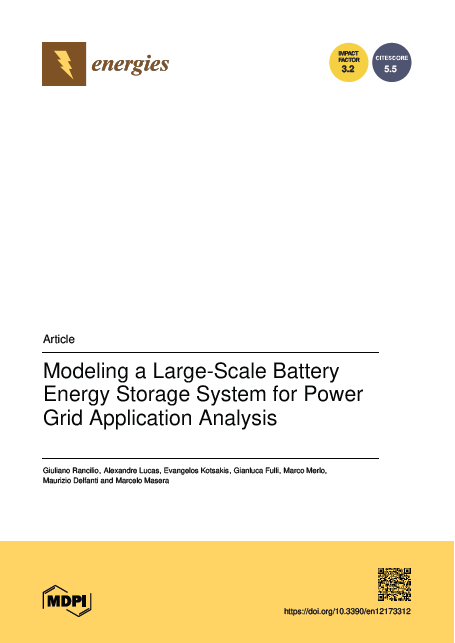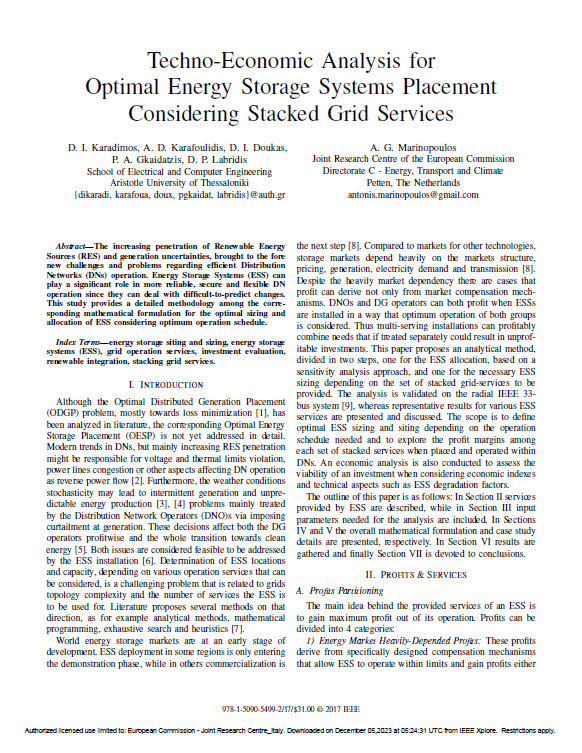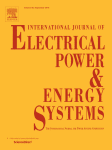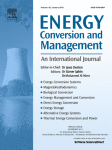Background and context
Energy storage has been part of the energy system for decades, but it is with the emergence of new storage technologies and the need to integrate more renewable energy sources into the power system that the sector is faced with new challenges – and opportunities. Research and technological development and innovation are needed to anticipate future trends and to enable the wider application of energy storage technologies.
Our role
We assess the developments in the energy storage field aimed to facilitate the transition towards a low-carbon energy system.
Main publications

2024 - Revenue Maximization for a Battery Storage with Optimal Capacity Revamping due to Cyclic Fade
An accurate approach for optimal revenue-stacking operation of battery storage assets should consider the degradation of their energy capacity as a result of cyclic charging/discharging operations. This paper proposes a novel revenue-maximization model to compute the optimal operation of a lithium-ion battery in short-term energy markets whilst accurately computing the corresponding energy capacity degradation and evaluating the long-term optimal capacity revamping policy to replace the degraded cells. An effective reformulation technique allows to integrate the typical non-convex behavior of the energy capacity degradation in standard optimization problems. Results demonstrate the effectiveness of the proposed methodology compared to alternative formulations. The outcomes highlight the impact of energy degradation on the typical operational policy of the battery, quantifying the performance improvement that can be achieved by striking the optimal pay-off between market revenues and revamping costs.

2019 - Modeling a Large-Scale Battery Energy Storage System for Power Grid Application Analysis
The interest in modeling the operation of large-scale battery energy storage systems (BESS) for analyzing power grid applications is rising. This is due to the increasing storage capacity installed in power systems for providing ancillary services and supporting nonprogrammable renewable energy sources (RES). BESS numerical models suitable for grid-connected applications must offer a trade-off, keeping a high accuracy even with limited computational effort. Moreover, they are asked to be viable in modeling for real-life equipment, and not just accurate in the simulation of the electrochemical section. The aim of this study is to develop a numerical model for the analysis of the grid-connected BESS operation; the main goal of the proposal is to have a test protocol based on standard equipment and just based on charge/discharge tests, i.e., a procedure viable for a BESS owner without theoretical skills in electrochemistry or lab procedures, and not requiring the ability to disassemble the BESS in order to test each individual component. The BESS model developed is characterized by an experimental campaign. The test procedure itself is framed in the context of this study and adopted for the experimental campaign on a commercial large-scale BESS. Once the model is characterized by the experimental parameters, it undergoes the verification and validation process by testing its accuracy in simulating the provision of frequency regulation. A case study is presented for the sake of presenting a potential application of the model. The procedure developed and validated is replicable in any other facility, due to the low complexity of the proposed experimental set. This could help stakeholders to accurately simulate several layouts of network services.

2017 - Techno-Economic Analysis for Optimal Energy Storage Systems Placement Considering Stacked Grid Services
The increasing penetration of Renewable Energy Sources (RES) and generation uncertainties, brought to the fore new challenges and problems regarding efficient Distribution Networks (DNs) operation. Energy Storage Systems (ESS) can play a significant role in more reliable, secure and flexible DN operation since they can deal with difficult-to-predict changes. This study provides a detailed methodology among the corresponding mathematical formulation for the optimal sizing and allocation of ESS considering optimum operation schedule.

2016 - Smart grid energy storage controller for frequency regulation and peak shaving, using a vanadium redox flow battery
Vanadium Redox Flow Batteries (VRFB) are a promising option to mitigate many of these shortcomings, and demonstration projects using this technology are being implemented both in Europe and in the USA. This study presents a model using MATLAB/Simulink, to demonstrate how a VRFB based storage device can provide multi-ancillary services, focusing on frequency regulation and peak-shaving functions. The study presents a storage system at a medium voltage substation and considers a small grid load profile, originating from a residential neighbourhood and fast charging stations demand. The model also includes an inverter controller that provides a net power output from the battery system, in order to offer both services simultaneously. Simulation results show that the VRFB storage device can regulate frequency effectively due to its fast response time, while still performing peak-shaving services. VRFB potential in grid connected systems is discussed to increase awareness of decision makers, while identifying the main challenges for wider implementation of storage systems, particularly related to market structure and standardisation requirements.

2013 - Application of battery-based storage systems in household-demand smoothening in electricity-distribution grids
This article analyses in technical terms the application of battery-based storage systems for household-demand smoothening in electricity-distribution grids. The analysis includes case studies of Denmark, Portugal, Greece, France and Italy. A high penetration of photovoltaic systems in distribution grids is considered as an additional scenario. A sensitivity analysis is performed in order to examine the smoothening effect of daily demand profiles for different configurations of the battery system.
In general, battery-storage systems with low rated power and low battery capacity can smooth the demand sufficiently with the aid of a simple management process. For example, with 1 kW of peak demand, a 30–45% decrease in the variability of the daily demand profile can be achieved with a battery system of 0.1 kW rated power and up to 0.6 kW h battery capacity. However, further smoothening requires higher battery-system capacity and power. In this case, more elaborate management is also needed to use the battery system efficiently.
